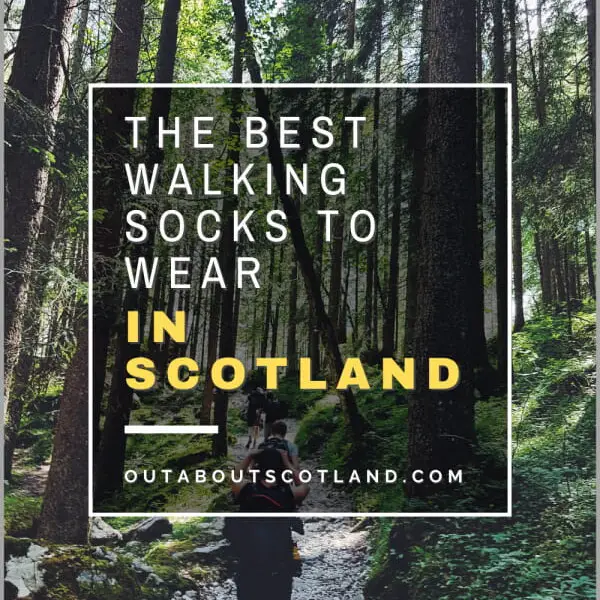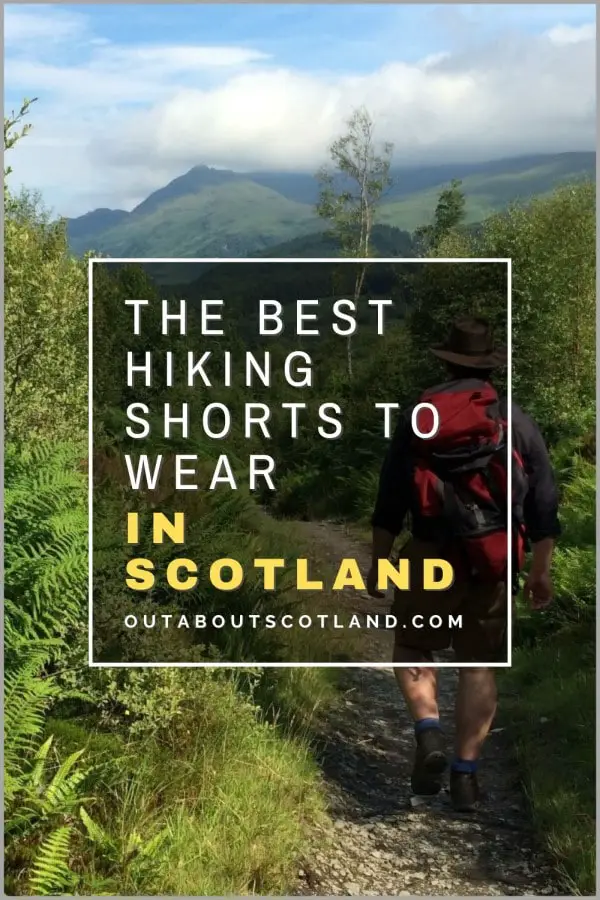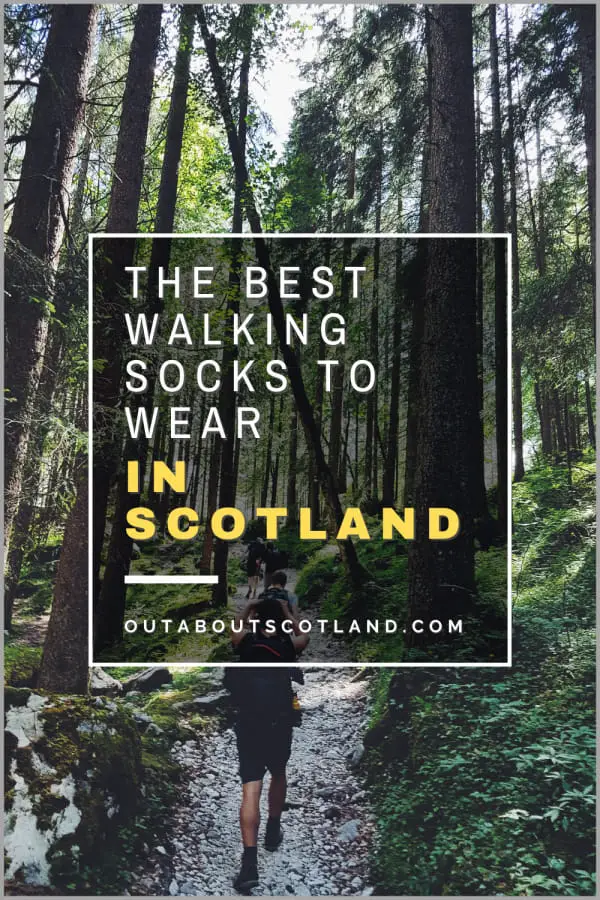As someone who spends most of his free time walking around Scotland, I know first-hand how important it is to have good footwear. Of course, the most important item to adorn your feet is a decent pair of walking boots (see the Top 5 Waterproof Boots for Walking in Scotland), but they’re closely followed by good-quality socks.
Choosing the right socks can make or break a walking holiday. If they’re too thin, they’ll wear through quickly and cause blisters, and if they’re too thick without being breathable, they’ll make your feet sweaty and cause an unpleasant skin rash.
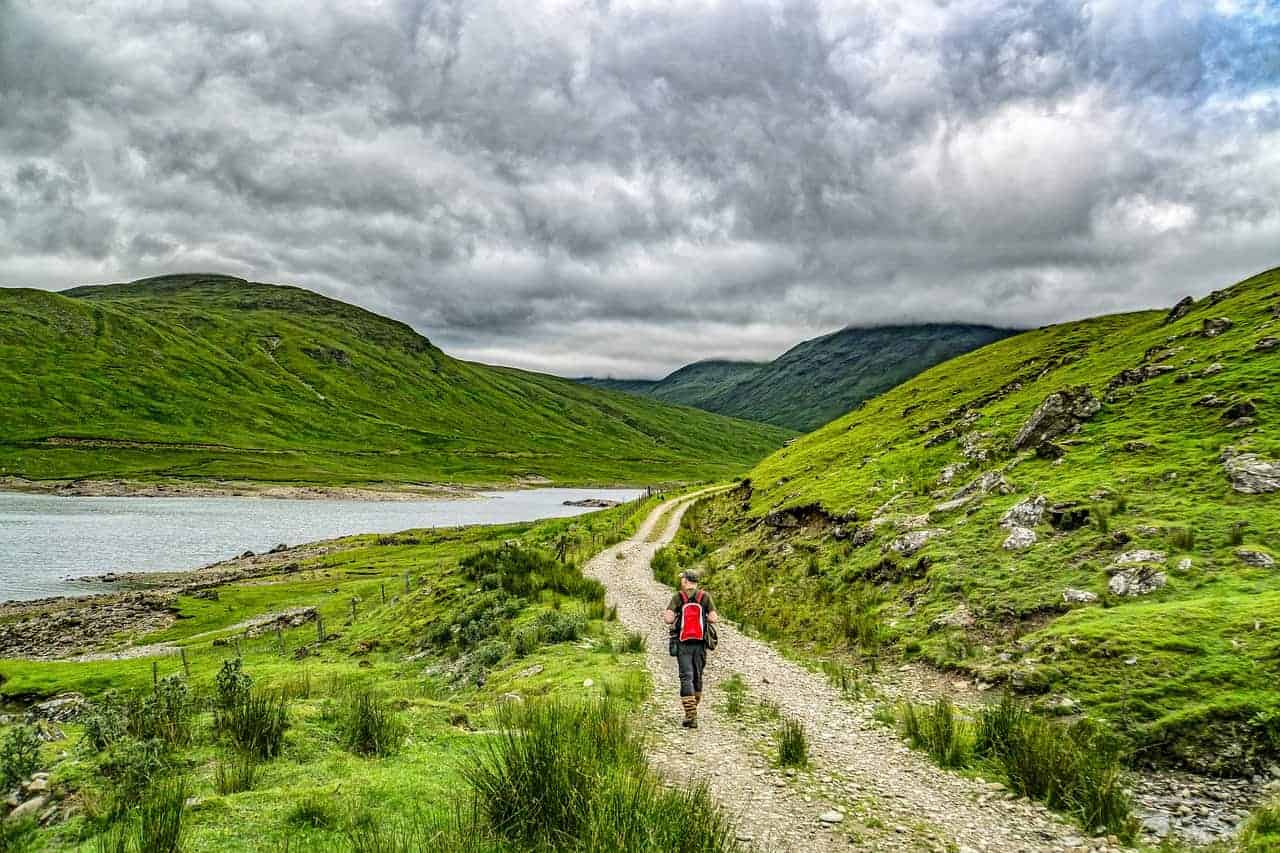
So, what’s the solution? While you could just pick up a cheap pair and hope for the best, it’s perhaps wiser to choose socks that are specifically designed for walking and long-distance hiking. The best hiking socks wick away moisture while keeping feet cool, have padded soles and heels to prevent blisters, and are often insulated and waterproofed to deal with Scotland’s treacherous winter weather.
In this article, you’ll discover a collection of highly-rated socks from Amazon, each of which has been designed first and foremost for walking to keep feet as dry and blister-free as possible.
In a hurry? If you don’t have time to read the reviews, follow the link below to purchase my #1 recommended walking socks from Amazon.
Recommended walking socks to wear in Scotland: Danish Endurance Merino Wool Walking Socks
Why Do You Need Walking Socks?
If you intend to go on a long hike in Scotland you’ll save yourself from untold misery by spending a little extra on walking socks rather than using the bog-standard socks that you use day-to-day at home.
This is something I know from first-hand experience after leaving behind my usual cushioned walking socks on a weekend camping trip. I was planning to walk the John Muir Way from Helensburgh to Strathblane (a distance of 27 miles), but by the time I’d arrived in Ballcoh (around 9 miles from the start), I had to admit defeat and call the trip off.
Why? Well, it was all down to my cheap socks. Not only had I developed eye-watering blisters on both heels, but the thin cotton of my supermarket-brand socks had absolutely no grip on the insoles of my boots, leading to my toes painfully hitting the toe caps on every step.
A completely ruined weekend thanks to a pair of £1.99 socks from Tesco. From then on, I vowed never to use budget socks again, which led me to try dozens of pairs before finally settling on two preferred brands (coming up next).
What to Look For in Walking Socks
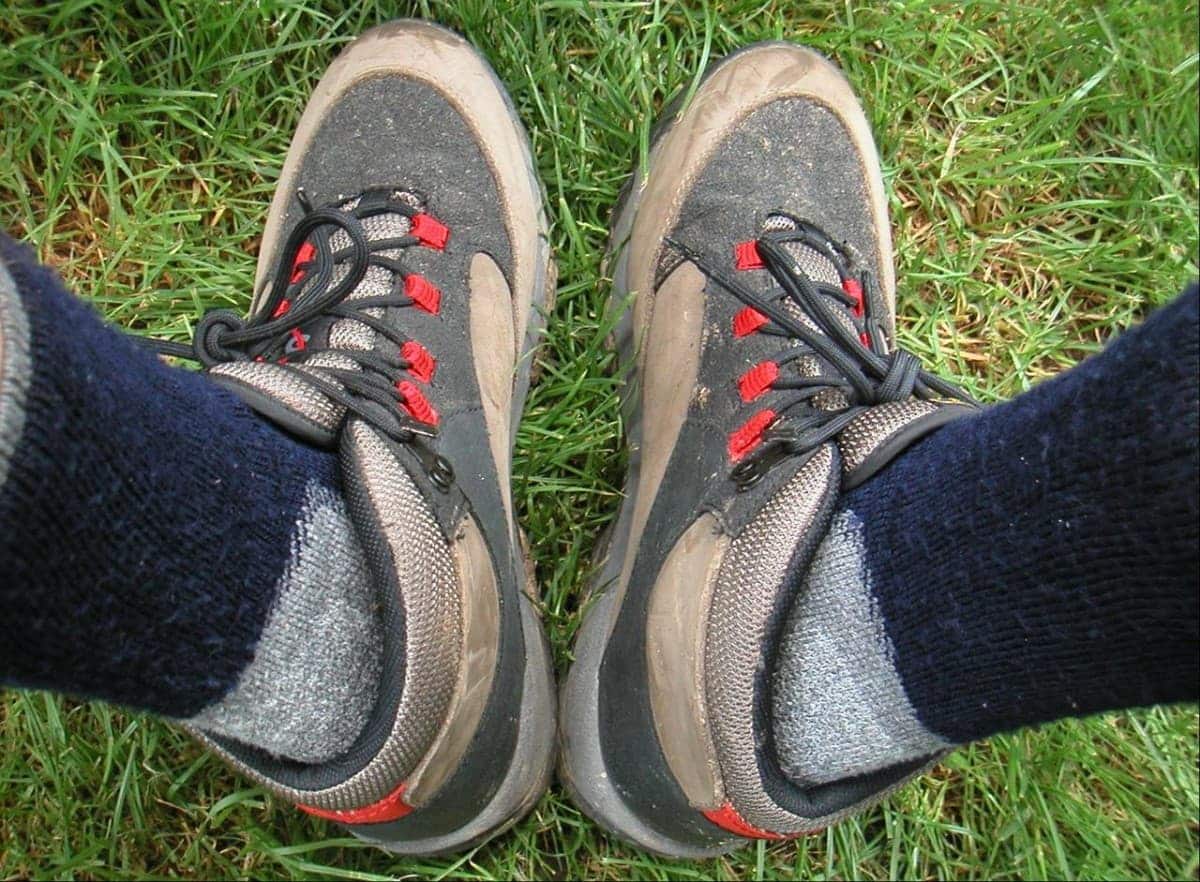
So what should you look for in a walking sock? I guess everyone will have their own opinions, but I’ll list my own must-haves as a regular wanderer of Scotland in the following section.
1: Anti-blister. This is by far the most important criterion for a walking sock as getting even the slightest blister will make every step a misery.
Blisters are formed when shear forces between the skin and the boot cause the outer layers of the epidermis to separate. The air pocket between the layers fills with a fluid called serum which cushions and protects the raw skin beneath, but if the blister bursts the nerves in the new skin growth are exposed, which is very painful.
There are several anti-blister products on the market (see this article: Top 5 Products to Prevent Foot Blisters) but socks should be the first line of defence.
Most walking socks have extra-thick padded heels and soles to stop the friction between the foot and the boot, but there are also double-layer socks that have an inner liner that sticks to the foot and an outer liner that moves with the boot.
There are lots of choices for double-layer socks, but the brand that’s widely regarded as the best walking socks to prevent blisters is 1000 Mile (see below).
2: Insulated for cold weather. We all know how cold Scotland can get in the winter, but unless you’ve never been here before, you won’t realise just how cold it can get. The Cairngorms, for example, frequently have over 100 days of snowfall each year, and temperatures have plummeted to -27 °C in the past.
Prolonged exposure in those temperatures can lead to frostbite without the correct footwear which can – at its worst – lead to the complete loss of toes.
Frostbite is an injury where the skin and the underlying tissues are damaged beyond repair due to the cold. Symptoms start with a numbness in the affected area, which progresses to the skin changing appearance to hard and waxy before finally turning black as the flesh dies.
It’s vitally important to seek medical attention if you experience any of these symptoms:
- Pain and swelling in toes and fingers.
- A fever.
- Loss of muscle function.
- A warm feeling in the skin after the pain of cold exposure.
If you intend to go on a long-distance hike in the Scottish Highlands, a pair of thick insulating socks could mean the difference between an enjoyable time and an admittance to the hospital.
Most walking socks are labelled as ‘warm’ but they pale in comparison to socks that are specifically designed to retain heat, such as British-designed Heat Holders socks. Heat Holders use a special yarn that’s 3x warmer than most ‘thermal’ socks, and having owned them in the past, I can confirm they are guaranteed to keep even the chilliest tootsies nice and warm.
Buy Heat Holders Socks from Amazon.

3: Lightweight and breathable. To date, I haven’t found a single pair of socks that are perfectly warm and cooling when needed, cushioned, lightweight, anti-blister and breathable, although the Danish Endurance socks shown further down this page come close.
To cope with Scotland’s famously changeable weather it’s a good idea to have two different types of walking socks – warm and thick pairs for winter walks and lightweight and breathable pairs for the summer months. Winter socks need to be warm like the Heat Holders mentioned above, have anti-blister properties, and sit high on the calf to prevent rubbing against high boot collars.
Summer socks, on the other hand, need to keep your feet cool while still offering blister prevention. The main difference between summer and winter hiking is that most people wear lightweight walking shoes in the summer as opposed to heavy boots, so there’s no need for long socks that sit halfway up the calf.
As you start looking around at the top-tier walking socks, you’ll notice they’re advertised as having a ‘zoned’ construction, which means there are different weights of fabric in different parts of the sock. The benefit of zoned socks is that they offer a good combination of thickness where you need it most—e heel and sole—d a cooler, lighter fabric everywhere else.
4: Superior materials. Next on the list of sock must-haves is the fabric used in the construction, which is either 100% natural or a mixture of natural and man-made fibres.
In my experience, natural fibre socks are far superior to man-made materials when it comes to keeping your feet cool and sweat-free, but they’re usually more expensive and don’t last as long, and they can be rather itchy against bare skin.
If you ever see 100% sheep’s wool (not Merino wool) socks I’d give them a wide berth unless you’re only going to use them for short wanders in a pair of welly boots. In that scenario, they shine as they keep toes toasty warm and they provide lots of padding for the thin sole of the boot.

Otherwise, they’re hopeless. Normal sheep’s wool absorbs water and doesn’t dry out easily and it’s also itchy, which is in sharp contrast to the wool from Merino sheep. These sheep have been bred for their coats rather than their meat, and Merino wool is characteristically very fine and soft with long fibres that trap warm air while transporting sweat away from the skin.
Unlike most man-made fibres, Merino wool is porous and can therefore wick away moisture as a vapour, which in turn means the skin never feels clammy and wet.
As far as I’m aware there are no man-made fabrics that perform as well at wicking away moisture as natural Merino wool, which is why the majority of walking socks use a blend of fibres such as Nylon (adds strength), Lycra (adds stretchiness), and Merino wool (reduces sweating).
The last point to note about the best walking socks is that they usually have extra-thick stitching on the toe to improve their durability. As you’d expect, this thick stitching would rub against toes in normal socks, but walking socks have the stitching joint on the outside.
That’s all the bases covered when it comes to choosing walking socks, so now let’s take a look at the best socks that can be purchased on Amazon.
Top 5 Recommended Walking Socks
Danish Endurance Outdoor Walking Socks in Merino Wool
Overall Best Walking Socks
Pop into any camping and outdoor retailer and you’ll usually find a great big section devoted to socks. Socks for winter, socks for summer, socks for men, socks for women. I’ve even seen socks for dogs.
So out of all those different brands and types of socks, how on earth are you supposed to know which ones are best? Well, from my own experience, once you get to around £15 a pair the performance is pretty much identical unless you get niche socks like Sealskins or Heat Holders (coming up next).
To be honest, choose any of the 1000 Mile, Bridgedale, or Danish Endurance socks and you won’t go far wrong, but for me, the latter brand just about comes in first place.
Danish Endurance socks can be picked up at a decent price on Amazon, they’re fairly lightweight and keep your feet cool, and they’re very good at preventing blisters. Overall, I’d say these are probably the best cushioned socks for walking out of the others listed in this article and they’re amongst the best socks for walking long distances.
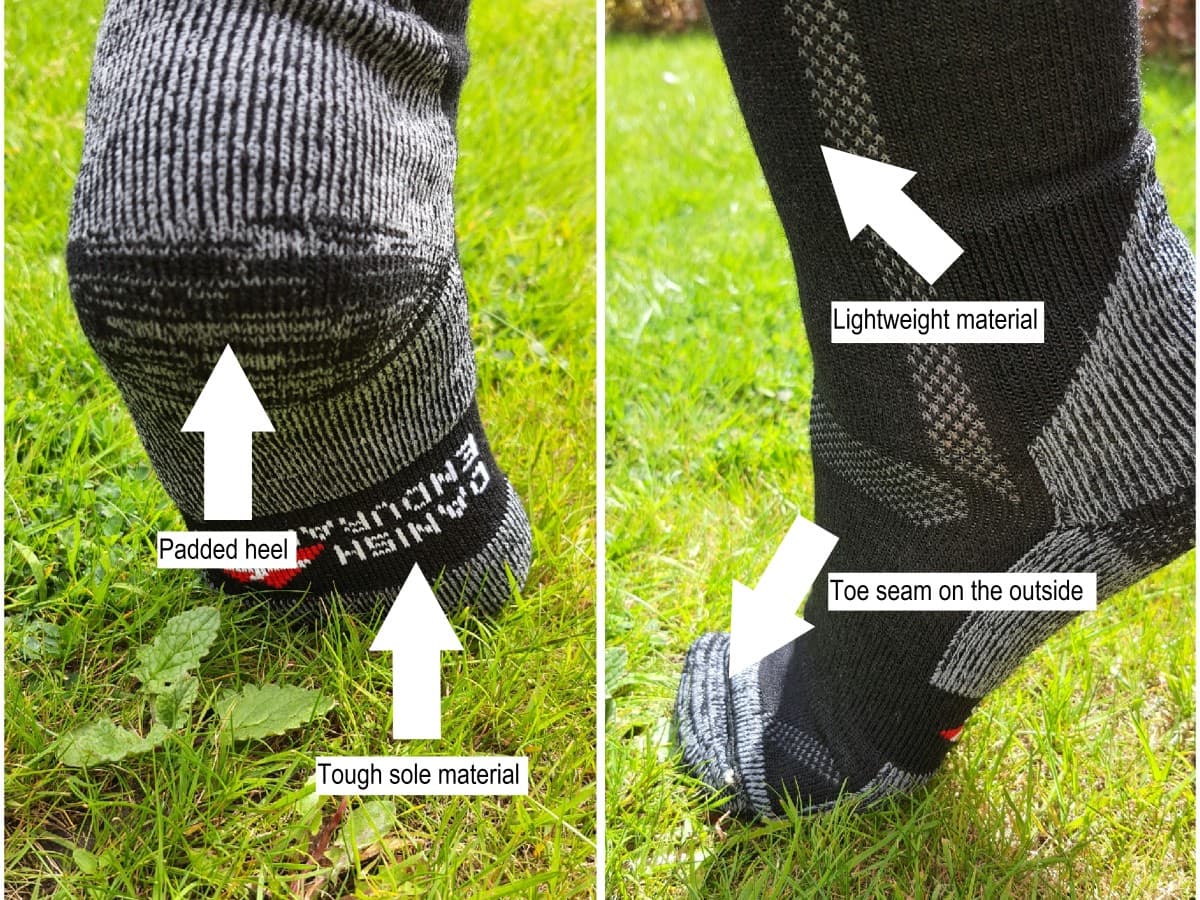
Some people may sneer at the relatively low 30% Merino wool blend but I feel they’ve been engineered with durability in mind as much as comfort, hence the high percentage of Nylon and Acrylic. Because 2/3 of the fabric is man-made fibres, these Danish Endurance socks are uber-tough, and I can confirm they’re pretty much resistant to fabric pills.
The heels are zoned and have a thicker material than the top which means they’re much more resistant to wear and tear than standard socks, and the material does a good job of wicking away sweat even with their lacklustre 30% Merino wool content.
Negatives? Well yes, there are a couple I guess. First off, the ankles are a bit tight, but then I usually roll my socks down over my boots anyway, so that’s not a big issue. Top tip: If you roll your socks over your laces it helps to stop the knot from coming undone.
The second negative (more of a design feature) is that they’re quite thin for walking socks, which is great in summer but not so good in winter. But with all that said, these Danish endurance socks do their job, and they do it well, and for me, that’s good enough.
Pros
- Great value.
- Zoned material with thick anti-blister heels and a breathable upper.
- Lightweight but still fairly warm.
- Tough as old boots (pardon the pun).
Cons
- A wee bit tight on the ankle.
- Not suitable for the depths of winter.
- If they get wet, they take a while to dry out.
- MERINO WOOL COMFORT: Our cushioned wool stockings with thermoregulating breathable merino wool and sweat-wicking ventilation lanes ensure that your feet stay fresh, dry and comfortable in any weather
- OUTDOOR DESIGN: Our antibacterial and anti slip hiking socks feature targeted cushioning to reduce the risk of blisters and sore feet. Great for hiking, trekking, outdoor adventures, walking, travelling, work or everyday
- MADE IN EUROPE: Our hiking socks are designed with Everest mountaineer Rasmus Kragh who tests our products to ensure high quality standards. The socks are fairly produced in Portugal
- PREMIUM MATERIALS: Made from 38% Wool (Merino), 30% Acrylic, 30% Polyamide, and 2% Elastane. OEKO-TEX standard 100 certified. Free from harmful substances. Machine washable at max. 40°C. No tumble dry
- ANTI-HOLE GUARANTEE: Got a hole in your socks within the first year after purchase? We will send you a replacement for free. If you have any questions, our customer service is always happy to help you
Heat Holders Thermal Socks
Best Socks to Wear in Winter
These socks aren’t walking socks per se, but I’m including them in this list because nothing comes close to keeping your feet toasty warm.
Heat Holders socks are made from 100% man-made fibres which have been treated in such a way that the inside pile is brushed into tiny loops similar to natural wool, which retains the maximum possible amount of warm air. Compared to normal winter walking socks I’d say these heat holders are at least twice as warm – if not more – making them the go-to sock for walks in freezing conditions.
With that in mind, Heat Holders are best combined with lightweight walking socks, with these sitting on the outside. I’ve found that this combo is just about practical for walking boots, but it really comes into its own with a pair of wellies.
Yes, I know Wellington boots aren’t hiking boots, but they’re ideal for anyone who goes winter walking with their dog. The downside is that most wellies don’t have cushioned insoles, which is where these Heat Holders come to the rescue. With regard to wearing them with hiking boots, they do a fantastic job of keeping the heat in, but there are a few negatives if worn on their own.
First, the material isn’t reinforced, so it wears away quite quickly compared to something like Danish Endurance or Bridgedale. Second, I find the toe seam is a wee bit uncomfortable, and third, if you go on a long walk wearing just these socks, you’d better be prepared with a pack of Compeed to prevent blisters.
Still, these socks were designed with one purpose in mind – keeping feet warm – and at that, they excel. If worn in the right circumstances (with wellies or as part of a dual-sock combo with hiking boots) there’s no better option for winter walks.
Pros
- Unbelievably good at retaining heat.
- The perfect accompaniment to Wellington boots.
Cons
- No additional padding, so these socks don’t offer much protection against blisters.
- The inner lining is very fluffy so some clothes will end up covered with hairs when washed together.
- Not very durable if worn on long hikes.
- 🔥 HEAT HOLDERS YARN - Our Specially developed thermal yarn provides high performance insulation against cold with superior moisture breathing abilities.
- 🔥 THERMAL BRUSHING - Our expert brushing process maximises the amount of warm air held inside each sock for total warmth and all day comfort.
- 🔥 2.34 TOG RATING - With a 2.34 tog rating, your feet and legs will be 7X warmer than a regular cotton sock even in extremely chilly winter climates.
- 🔥 HEAT HOLDERS LOOPS - Innovative knitting technology produces our unique, extra long looped cushion pile to hold in more warm air, increasing the TOG rating.
- 🔥 VALUE FOR MONEY - Available in 3 pair value packs, with a bunch of great colours and patterns to choose from, these socks offer the best when it comes to warmth and style.
Sealskinz Waterproof Cold Weather Socks
Best Socks to Keep Feet Dry
I was given a pair of Seaskinz all-weather socks a couple of years ago, and as amazing as they are at keeping feet dry I have to be honest and say I haven’t felt the urge to buy any more. That’s not to say they’re not good socks – they’re fantastic – but only in certain conditions.
So the pros of Sealskinz. Well, they’re designed primarily to keep water out (clue’s in the name) and at that task, they have no competitor that comes close.
Sealskinz socks are manufactured with three separate layers – a soft Merino wool inner liner, a water-resistant mid-layer, and a nylon blend exterior – which all work together to wick away sweat while preventing water from penetrating into the sock. After trudging through snow, puddles, moorland and rivers, I can confidently say that if you wear Sealskinz socks you will not suffer from wet feet.
There are a couple of negatives, though.
First is the price, which is 2-3 times that of normal walking socks. These things are good, but for the same amount of money it’s just as easy to chuck a couple of extra pairs of normal walking socks into a backpack and change them out as needed. Second, they’re no better than ordinary walking socks if you’re wearing shorts, as water will soak into the top band. Wearing them under trousers solves that issue, though.
Third, I personally couldn’t get on with the fit of these socks. The mid-layer has hardly any stretch, so when you walk, the material eventually ends up bunching in the toe cap, although admittedly you can walk for a good couple of hours before that happens. But with all that said, if keeping your feet dry is a major concern then you absolutely will not go wrong with a pair of Sealskinz socks.
The number of positive reviews on Amazon (over 1,500 at 5 stars) speaks for itself, so I guess there are plenty of people out there who haven’t had the issues I have.
Pros
- No other brand of sock comes close to keeping your feet dry like Sealskinz.
- These socks could save you the cost of having to buy a new pair of boots if they’re leaking.
- These would be great socks for winter cycling or canoeing.
Cons
- They’re expensive.
- They’ll be ruined if you put them on a 90 °C wash. Don’t ask me how I know…
- Waterproof and breathable - three layer construction for warmth, durability and waterproofing
- Merino wool lining for moisture control, insulation and comfort
- Support - zonal elastication for added support. Flat toe seams provide comfort and prevent rubbing and blisters
- Close fit - four way stretch for comfort and stretch fit
- Product Care Wash At 40C/105F, Drip Dry (Not On A Radiator), Do Not Dry Clean, Do Not Iron, Do Not Bleach
- Wash at 40ºC/105ºF, Low Tumble Dry or Drip Dry, Do Not Dry Clean, Iron, or Bleach
- Pull On
- Waterproof Cold Weather Mid Length Sock
- Different sizes available (S-XL)
- 11100064010130
Bridgedale Everyday Outdoors Coolmax Liner
Best Socks for Walking in Hot Weather
These socks from Bridgedale are designed to be worn under thicker walking socks, meaning they’re thin, lightweight, and have good sweat-wicking properties.
Surprisingly, for such thin walking socks, they’re also pretty good at preventing blisters when worn on their own, although, as an owner, I’d say they’re not as good in that regard as the Danish Endurance socks I mentioned earlier.
Where these things shine, though, is in summer when you want to wear heavy hiking boots but don’t want sweaty feet. Most walking socks just don’t cut it in the summer, but when worn on their own these Bridgedale liners offer enough blister protection for long walks while keeping feet cool and dry thanks to the patented Coolmax fabric.
They’re constructed from 100% man-made fibres so that might be an issue for some people, but in all honesty, I haven’t found they’re any less comfortable than socks with a high Merino wool content, and they’re certainly durable.
Finally, they’re recommended by the Duke of Edinburgh Awards as part of their expedition kit list, which is as good a recommendation as any.
Pros
- Lightweight, cool, durable.
- Decent blister prevention.
- Superb at wicking away sweat.
Cons
- Too thin and cold to wear on their own in winter.
- Ultra Lightweight
- Extra-fine, plain knit with Lycra fit.
- Coolmax - extra comfort next-to-skin.
- Moisture wicking for dryness
1000 Mile Approach Men’s Double Layer Blister Free Walking Socks
Best Anti-blister Walking Socks
I know people who swear by 1000 Mile socks and wouldn’t buy anything else, and certainly the claims from the manufacturer look incredible. First off, as the name suggests, these socks are supposed to last for 1,000 miles of use. That’s pretty amazing, as is the claim that they guarantee no blisters in 1,000 miles of walking.
The manufacturer’s confidence in their product is down to the construction of these socks, which have two separate layers: an inner man-made fabric called Tactel that wicks away moisture and a mix of Merino wool and nylon in the outer layer that adds cushioning and strength.
According to 1000 Mile, Tactel is twice as soft and 20% lighter than other sock fabrics and it dries 8 times faster than cotton. The reason these socks are so good at preventing blisters is due to the way the inner layer sticks to the foot, leaving the outer layer to rub against the boot.
These socks are also claimed to be suitable for walking in hot and cold weather, they give additional support to the arch of the foot, the toe seam does not touch bare skin, and they’re designed to fit snugly around the heel which prevents feet slipping in the boot.
As a final thumbs-up, if you do experience blisters or the socks wear out within 1,000 miles, the manufacturer promises to either give a full refund or replace the socks free of charge.
Pros
- A claimed 1,000 miles of blister-free walking.
- Dual layer socks that offer unparalleled moisture wicking while keeping feet warm when it’s cold and cool when it’s hot.
- Reassuring 1,000 miles guarantee.
Cons
- None that I’m aware of.
- 100% Blister free - Unique double layer construction gives outstanding comfort with no blisters and no wear-out within 1000 miles
- Sizing by UK shoe size
- Heel Power grips the heel firmly in place - so no slippage! and Arch bracing gives additional support
- Double layer construction eliminates friction between foot and shoe, reducing wear and preventing blisters
- Tactel inner layer wicks away perspiration to keep feet dry and cool
Conclusion
It’s obvious that next to good quality boots, good quality socks are an absolute must for anyone who enjoys walking in Scotland.
Socks that are specifically designed for hiking are long-lasting, have seams that do not rub against delicate skin, prevent feet from getting hot and sweaty, and perhaps most importantly, they are the first line of defence against dreaded blisters. There’s a bewildering assortment of walking socks available online, but one brand that consistently makes quality socks that are ideal for walking in Scotland is Danish Endurance.
You won’t go far wrong with any product from this manufacturer, but their standard Merino wool outdoor walking socks cover all the bases needed for most people, and they’re sold at a very reasonable price to boot (no pun intended…).
Note that all product reviews on this page are the opinion of Out About Scotland and your experience with these products may differ. The information contained in this article is provided for entertainment purposes only, and you are encouraged to seek expert medical advice for any issues regarding footwear.
Frequently Asked Questions
What is the best type of socks for walking?
The best type of walking sock depends on several factors including the season, the type of boot that’s worn, and if there’s a preference for natural fibres.
The best general-purpose walking sock will be mid-weight for use throughout the year, be calf-length so that the sock can be rolled over the laces, and be made from Merino wool which is a natural fibre that is cool and wicks away moisture.
Notable man-made materials to look for in walking socks are Smartwool, Coolmax, and Tactel.
Are thick socks better for walking?
The choice of thick or thin socks depends on the season. Thick socks are generally warmer and offer the best cushioning, while thin socks are lighter and keep feet cooler. In general, use thick socks in winter and thin socks in summer.
How do you wear walking socks?
When wearing walking socks, ensure the neck of the sock sits above the top of the boot, as this will prevent the boot from rubbing against bare skin.
The sock can be rolled down over the laces to prevent the laces from coming undone, or it can be left pulled up to keep calf muscles warm.
In winter, one option for advanced walkers is to wear a lightweight inner sock liner inside a cushioned outer sock.
What is the best material for walking socks?
Both nylon and cotton have their pros and cons. Nylon is a stretchable synthetic material that wicks away moisture and is durable and lightweight. It also pills easily and is not breathable which can lead to excess sweating.
Cotton is lightweight, breathable, dries quickly and is inexpensive. Negatives include the fact that it absorbs moisture, takes a while to dry out, and is heavy when wet.

